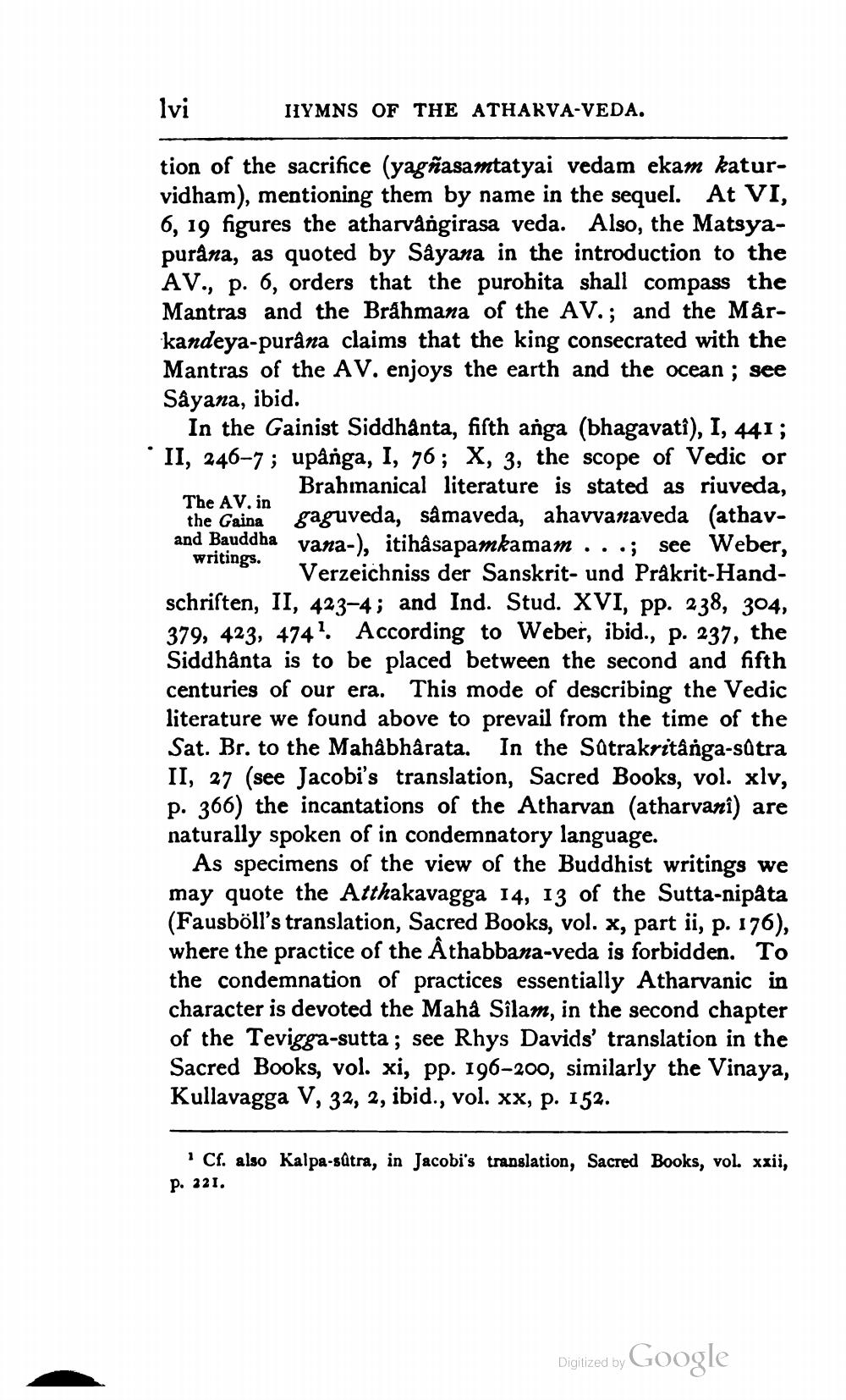________________
lvi
HYMNS OF THE ATHARVA-VEDA.
tion of the sacrifice (yagñasamtatyai vedam ekam katurvidham), mentioning them by name in the sequel. At VI, 6, 19 figures the atharvargirasa veda. Also, the Matsyapurâna, as quoted by Sayana in the introduction to the AV., p. 6, orders that the purohita shall compass the Mantras and the Brahmana of the AV.; and the Mârkandeya-purana claims that the king consecrated with the Mantras of the AV. enjoys the earth and the ocean ; see Såyana, ibid.
In the Gainist Siddhanta, fifth anga (bhagavati), I, 441; * II, 246–7; upånga, I, 76; X, 3, the scope of Vedic or
. Brahmanical literature is stated as riuveda, The AV. in the Gaina gaguveda, sâmaveda, ahavvanaveda (athavand Bauddha vana-), itihâsapamkamam ...; see Weber, writings.
* Verzeichniss der Sanskrit- und Prakrit-Handschriften, II, 423-4; and Ind. Stud. XVI, pp. 238, 304, 379, 423, 474? According to Weber, ibid., p. 237, the Siddhanta is to be placed between the second and fifth centuries of our era. This mode of describing the Vedic literature we found above to prevail from the time of the Sat. Br. to the Mahabharata. In the Satrakritânga-stra II, 27 (see Jacobi's translation, Sacred Books, vol. xlv, p. 366) the incantations of the Atharvan (atharvani) are naturally spoken of in condemnatory language.
As specimens of the view of the Buddhist writings we may quote the Atthakavagga 14, 13 of the Sutta-nipata (Fausböll's translation, Sacred Books, vol. x, part ii, p. 176), where the practice of the Athabbana-veda is forbidden. To the condemnation of practices essentially Atharvanic in character is devoted the Maha Silam, in the second chapter of the Tevigga-sutta ; see Rhys Davids' translation in the Sacred Books, vol. xi, pp. 196-200, similarly the Vinaya, Kullavagga V, 32, 2, ibid., vol. xx, p. 152.
* Cf. also Kalpa-sútra, in Jacobis translation, Sacred Books, vol. xxii, p. 221.
Digized by Google
Digitized by




